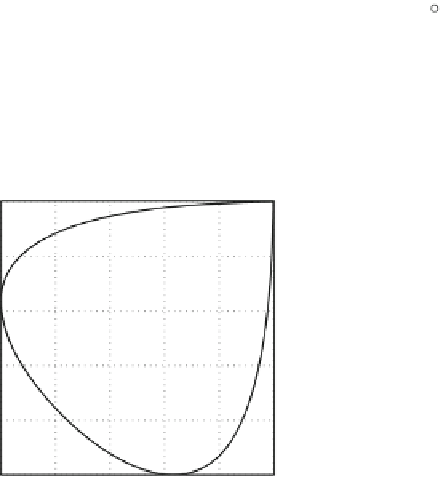Geoscience Reference
In-Depth Information
a
b
1000
1000
995
995
990
990
985
985
980
980
975
975
975
980
985
990
995
1000
975
980
985
990
995
1000
p(x=0)
p(x=0)
c
d
1000
1000
995
995
990
990
985
985
980
980
975
975
975
980
985
990
995
1000
975
980
985
990
995
1000
p(x=0)
p(x=0)
Fig. 7.2
The structure of phase error distribution as loops. In (
a
) is the distribution of pressure
between x
D
0
and x
D
1
,(
b
)isforx
D
0
and x
D
1:4
,(
c
)isforx
D
0
and x
D
2
,and(
d
)isfor
x
D
0
and x
D
4
.The
open circle
in each panel denotes the location of the mean
The pattern found in Fig.
7.1
b is consistent with the analysis presented above in so
far as the third moment is positive at the center of the distribution and decreases
to zero near the inflection point. Figure
7.1
b reveals however that the third moment
actually turns negative outside of the inflection points leading to a tri-pole structure.
This tri-pole structure in the third moments depends on the strength of the phase
error variance of
'
. When the phase error variance is large, rendering the assump-
tions about truncating the Taylor-series invalid, the tri-pole pattern in the third
moments is replaced with a relatively wide monopole negative region (not shown).
To gain understanding of the multivariate structure we plot in Fig.
7.2
the
distribution of pressure values at the center of the distribution
.x
D
x
0
/
against
the values of pressure at various locations for the same Gaussian phase error































































































Search WWH ::

Custom Search